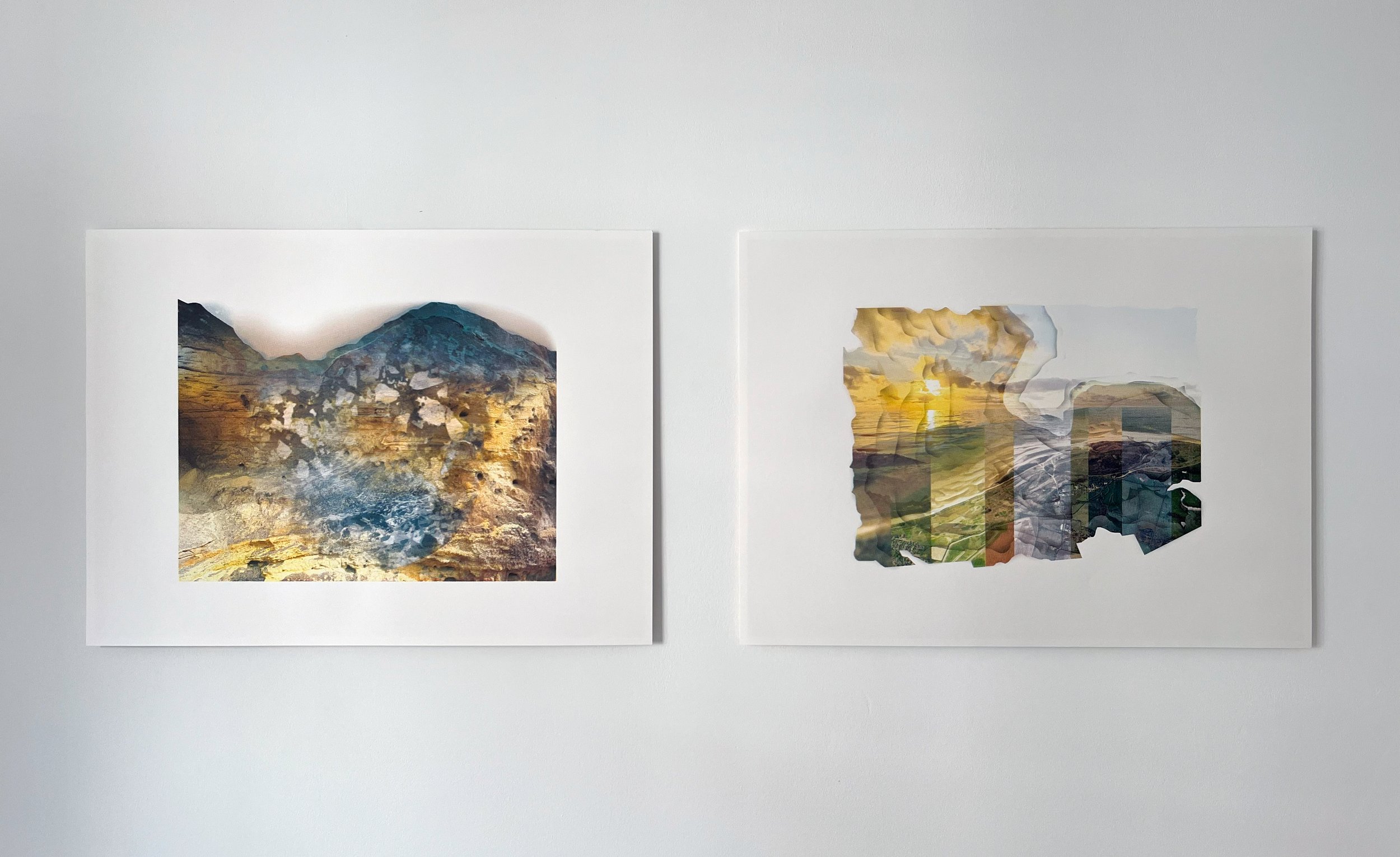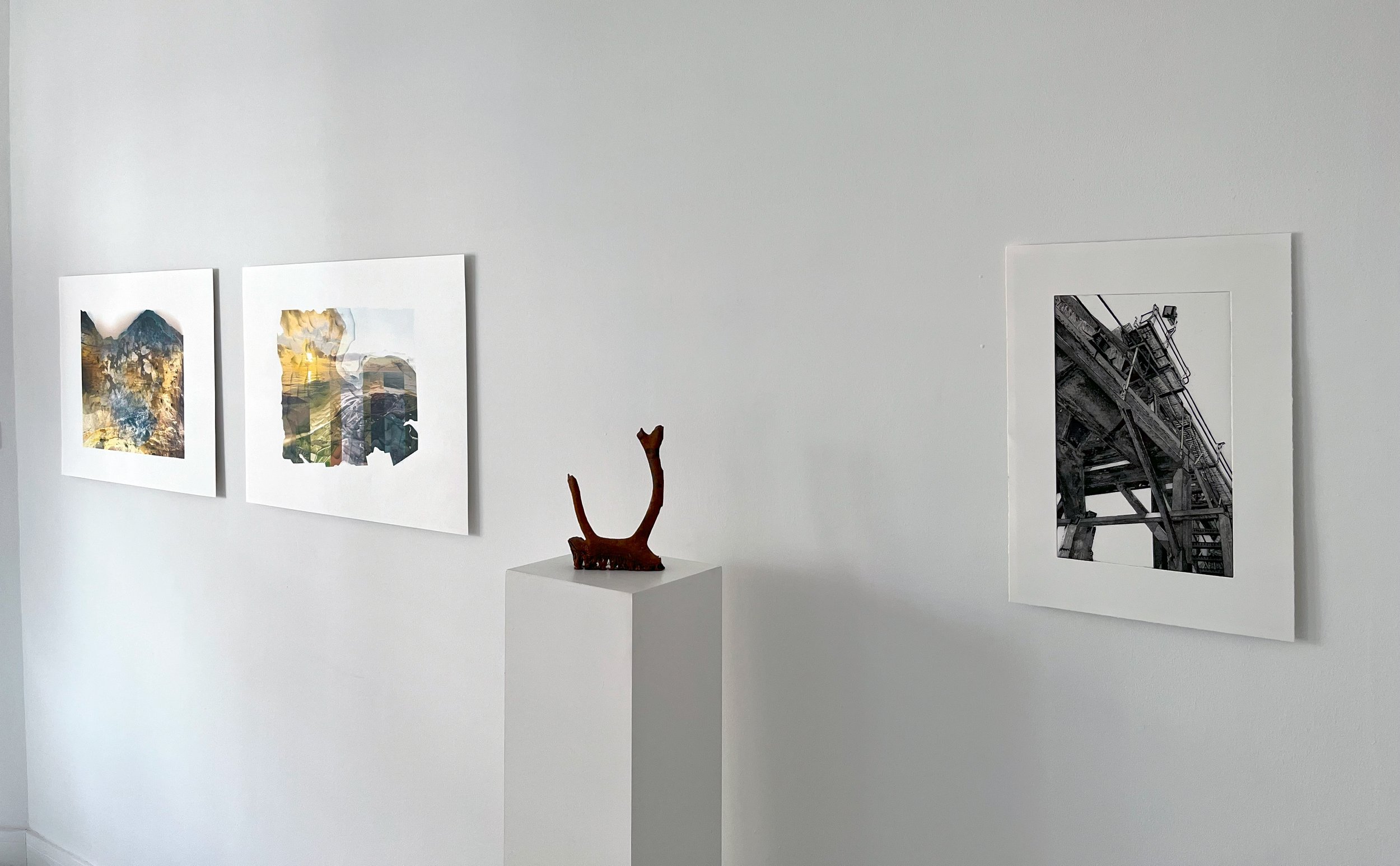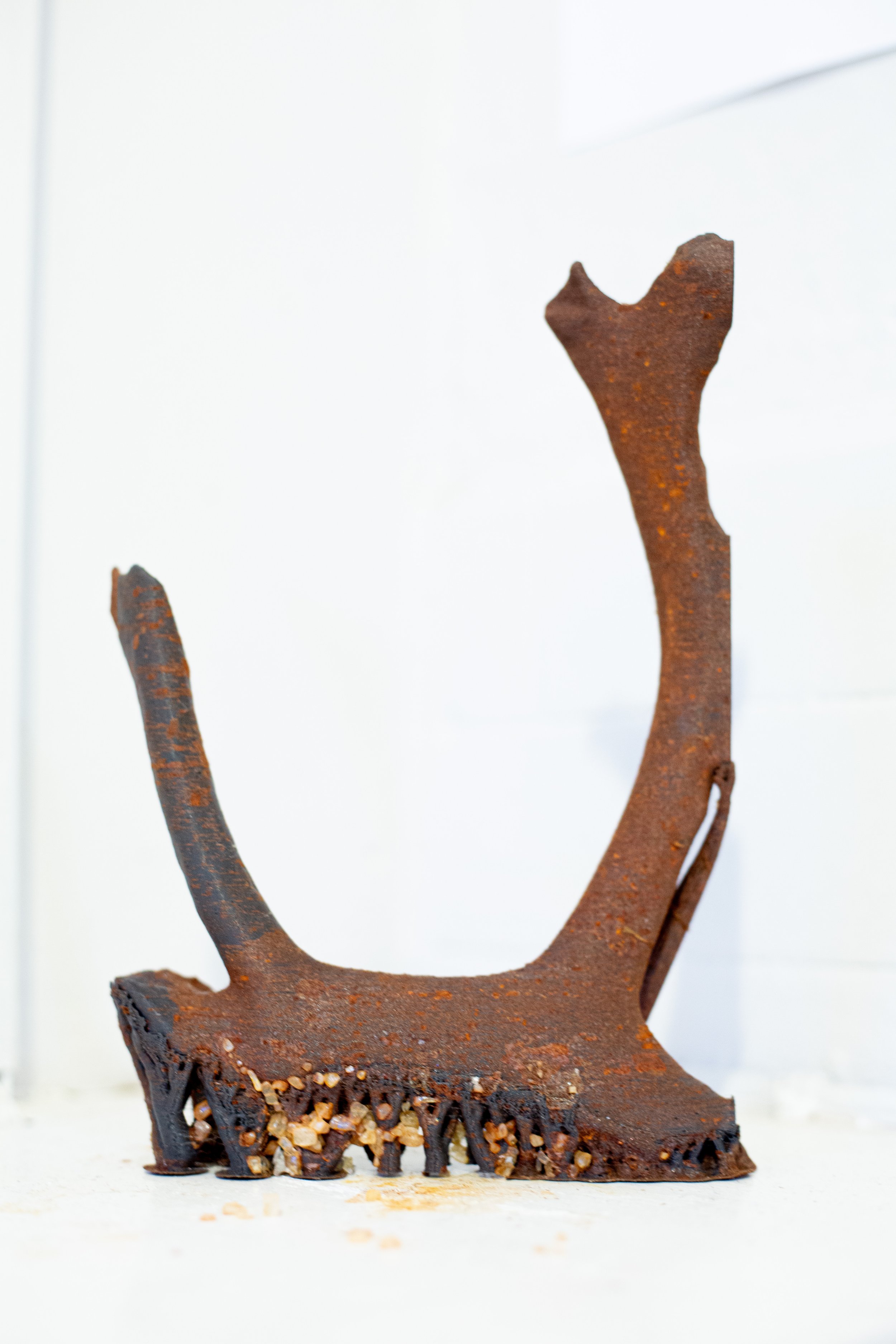

'Ground Water' exhibition at GroundWork Gallery, Norfolk. 'Deep Time in Dersingham Bog' and 'Glacial Pasts at Hunstanton', screen prints, 76 x 56 cm, 2025

'Ground Water' exhibtion at GroundWork Gallery, Norfolk. Installation of screen prints, 3D print, and etching, 2025
Climate change in Norfolk: Glacial Pasts
In 2024, I was selected for ‘Ground Up’, an artist residency hosted by GroundWork based in Kings Lynn, which established collaborative and interdisciplinary approaches to engaging with the local landscape, its history, current ecological concerns, and uncertainties for the future. Fieldwork and conversations with scientists, wildlife experts, and community members enabled broad perspectives to shape my research through my own and others’ embodied experiences and attitudes towards climate change in the area.
Below are a series of artworks developed in response to this residency.

Deep Time in Dersingham Bog, screen print on paper, 76 x 56 cm

Discoveries in the Earth, etching and aquatint on paper, 35 x 50 cm

Ice Age Remnants, 3D copper print with patina, approx. 25 (H) x 19 (W) x 10 (D) cm. (Image credits: Alice Louisa)

Glacial Pasts at Hunstanton, screen print on paper, 76 x 56 cm
These artworks directly respond to key locations explored within the ‘Ground Up’ artist residency: Dersingham Bog, Hunstanton Beach, and Middleton Aggregates. These works result from my ongoing investigations that utilise fieldwork with creative practice as an approach to learn, question, and critically reflect on the state of our ocean amidst a global climate crisis.
Embedded in each of the key landscapes visited were geological or organic markers of Norfolk’s glacial pasts. For example, in the heart of Dersingham Bog lied a glacial quartz, packed tightly into the bright oranges and reds of the sand around it.
At Middleton Aggregates, industrial sifting of the earth deep beneath our feet revealed a host of Ice Age remnants. I tentatively handled what I believed to be part of a Giant Deer antler, and let my imagination wonder back to an arid, cold landscape where creatures roamed through icy winds, while the ocean currents slowed.
Today, ocean currents are facing a climate tipping point. Due to the acceleration of global warming, rapidly melting sea-ice threatens to inhibit overturning and thus weakens major circulations, such as those in the Atlantic and North Sea. Much like in previous glacial periods, weakened currents have global consequences that contribute to more extreme conditions.
In these artworks, my creative process is varied but has enabled me to work closely with the landscape and seek to activate these markers of deep time through the lens of urgent ecological issues. Image-making using primary photographs and found imagery is used to create experimental visual narratives. Drawing and printmaking processes, capture elements of the landscape through gestural marks and a durational building of layers. Material investigations transitioned digital 3D scans into tactile objects, and experimentation with vinegar, salt, and sunlight patinated its surface, echoing time passed.
The overwhelming presence of the last glacial period in Norfolk has sparked an intriguing line of enquiry for my creative practice to explore how the landscape can be reimagined to help navigate the complexities of large-scale, and often difficult to comprehend, systems, like ocean circulation, deep time, and climate change. This body of work is continuously evolving alongside my intent to develop an elemental listening, which was such an important part of the fieldwork within ‘Ground Up’.

Dersingham Bog, Norfolk

Geologist, Tim Holt Wilson at Dersingham Bog

Studio wall at the Grange Artist Residency

Glacial Quartz in Dersingham Bog

Studio wall at the Grange Artist Residency

Middleton Aggregates, Norfolk

Middleton Aggregates, Norfolk

Studio wall at the Grange Artist Residency

Salt and vinegar patina on 3D print

Frog rescue at Hunstanton Beach

Studio wall at the Grange Artist Residency